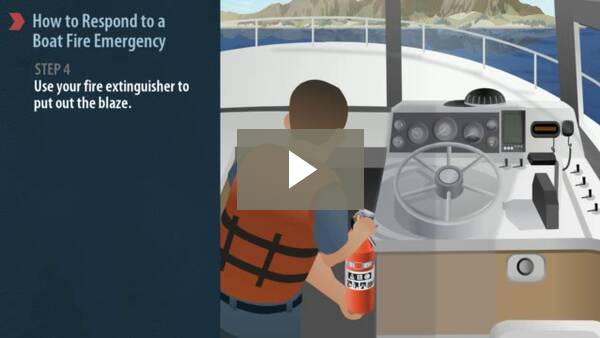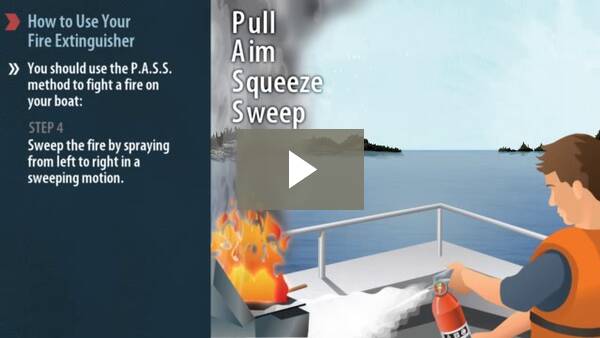Fighting a Boat Fire
Boat fire emergencies can be caused by a number of factors, including:
- Engine malfunctions;
- A fire in the galley;
- Or, the insufficient ventilation of an enclosed engine compartment.
If a fire or explosion occurs on your boat, you can lessen the severity of the emergency by being properly prepared for it. Prepare by doing the following:
- Making sure you have the mandatory fire-fighting equipment on board your boat.
- Maintaining your fire-fighting equipment regularly to make sure it’s in good working order.
- Placing your fire extinguisher in a readily accessible location.
- Ensuring you and your passengers will be able to respond quickly and efficiently.
Responding to a Boat Fire
Step 1) Immediately turn off the engine.
Step 2) Station your passengers away from the source of the fire.
Step 3) Make sure everyone on the boat is wearing a Coast Guard-approved life jacket.
Step 4) Use your fire extinguisher to put out the blaze.
Safe Boating Tip:
If you’re able to safely eliminate even just ONE of the fire’s main ingredients (i.e. fuel, oxygen, or heat), you’ll be able to extinguish the fire. This is a fire-fighting tactic that should only be attempted by responsible adults.
Using your Fire Extinguisher:
You should use the P.A.S.S. method to fight a fire on your boat:
Step 1) Pull the safety pin on the handle of your fire extinguisher.
Step 2) Aim at the base of the flames.
Step 3) Squeeze the handle.
Step 4) Sweep the fire by spraying from left to right in a sweeping motion.
Ensure the extinguisher is suitable for the type of fire you’re trying to put out and stand at a safe distance (at least one meter back) from the source of the flame.
Safe Boating Tip:
If your boat has a CO2-type extinguisher, keep in mind that it should be weighed annually and re-filled when it’s capacity has diminished to 90%.







